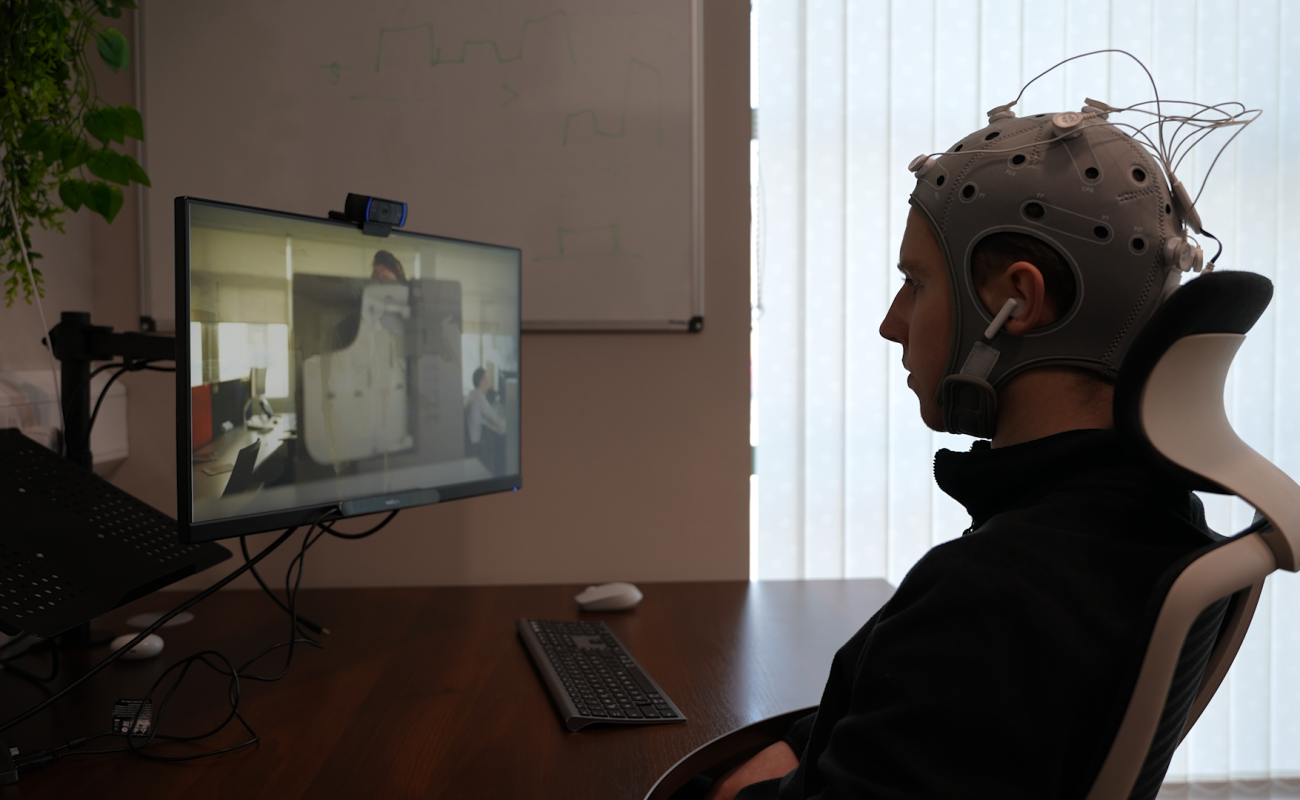Our Neuro Usability Testing services quantify the impact that your website or app interfaces and user journeys have on consumers to determine whether they been designed in the most optimal manner.

The user experience of a site or app can play a huge role in driving behaviour across digital platforms.
It can often be the difference between a user taking desired actions like a purchase or enquiry and exiting the site entirely.
Crucially, the user has no idea of this impact whatsoever. It is all occurring completely subconsciously.
Neuro Usability Testing combines the methodologies of Neuroscience and Usability Testing to measure the changes that occur in our brains and bodies while completing User Journeys.
The things that happen in our brains and bodies response to a website or app are largely involuntary, we don’t even realise they are happening.
Which means that relying on a person’s memory or recall to measure a UX/UI leaves a wealth of valuable datapoints behind.
Neuromarketing methods provide a deeper, more objective solution for understanding the true impact of your User Experience & Interface than some of the more subjective methods like surveys and interviews.


A typical neuro usability study brings together the best of both worlds: a neuro component and a survey component.
Neuro. First of all, we let the user get started in the flow undisturbed. This guarantees the most realistic interaction possible. Eye Tracking and EEG detect the unconscious bumps to conversion and also highlight the strong elements of a website. These methods reveal many subtle usability issues.
Survey. After the interaction, we discuss this in an interview. This interview serves to gain more in-depth knowledge of the insights found from the neurodata. In this way we can purposefully answer the why question. In this way we sketch a total picture of the user experience of visitors.
Unnecessary friction acts as a bottleneck for desired actions. Our Neuro Usability Testing identifies the 'tripping wires' within the UX visible. Neuro data illustrates which artefacts cause confusion & frustration while Eye Tracking reveals what information is fixated on, missed or searched for.
How intuitive is the design of the platform? Can users navigate the experience efficiently? Locating artefacts of interest as quickly as possible
What tweaks and changes will boost the online usability to drive consumers towards desired outcomes? By ensuring users navigate through the experience in a seamless manner, we increase the overall success metrics of the platform.
People may recall a good user experience, but they will never forget a bad User Experience.

A bad user experience can genuinely affect our memory structures and have a profound effect on how a brand is perceived within our subconscious mind. How does your User Experience stack up against not just your competitors, but your own brand associations?
Here you can find some of the questions we are asked about Neuro Usability Testing on a regular basis.
If you have questions you cannot find here, or elsewhere on our website, please contact us by clicking on the button below.
A usability test uncovers insights and issues people may experience when using your product or service. The test comprises a series of tasks completed by a test participant while you capture their feedback, actions, behaviors, and spoken-aloud thoughts.
Neuro usability testing is a method of evaluating the usability and user experience (UX) of a product or website by measuring physiological and psychological responses of users during their interactions with the product.
During a neuro usability testing, researchers use a combination of physiological measures, such as electroencephalography (EEG), eye-tracking, and Galvanic Skin Response (GSR), as well as behavioral measures, such as task completion time and error rates, to understand how users interact with a product. They also gather feedback from users through questionnaires, interviews, and other qualitative methods, to understand their perceptions and attitudes towards the product.
The goal of neuro usability testing is to gain a deeper understanding of how users experience and interact with a product, in order to identify usability issues and improve the overall user experience. This approach can provide valuable insights that traditional usability testing methods may not be able to uncover.
Despite the benefits over traditional marketing research processes, not all brands need to use Neuroscience based Usability Testing.
There are a few basic requirements to evaluate usability, the foremost of which is – there should be an exact research question. For example, do you want to know if your user journey is confusing? Or whether players of a game see the in-game advertising?
Brain activity is measured with an EEG headset. Analysing the Neuro data using EEG produces:
Desire:
This particular brain metric is like a replica of actual buyer behaviour. It tracks how a positive emotion can/may lead to an interest in the advertisement or website of a store.
Engagement:
This tracks how a part of the brand website gets the attention of consumers and how it may or may not be personally relevant.
Workload:
This helps to track the brain’s cognitive difficulty. If there are a lot of workloads, it may be difficult for the brain to process the content, which is undesirable. But a very low workload also isn’t desirable, as the consumer shouldn’t be bored with the content.
Distraction:
This tracks confusing parts of the ad and helps to analyse what may or may not be confusing.
Eye trackers complement EEG to help understand visual attention through the movements of the eyes – for example, where people look, how long they fixate on something, how many times they return etc.
Typically 10 Days
Normally a sample size of 6-10 people will suffice for conclusions in Usability Testing.
For updates on our research, analysis & other useful insights. Sign up to our mailing list.
